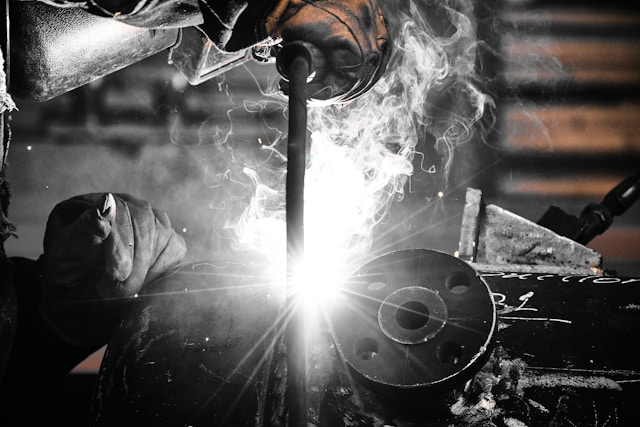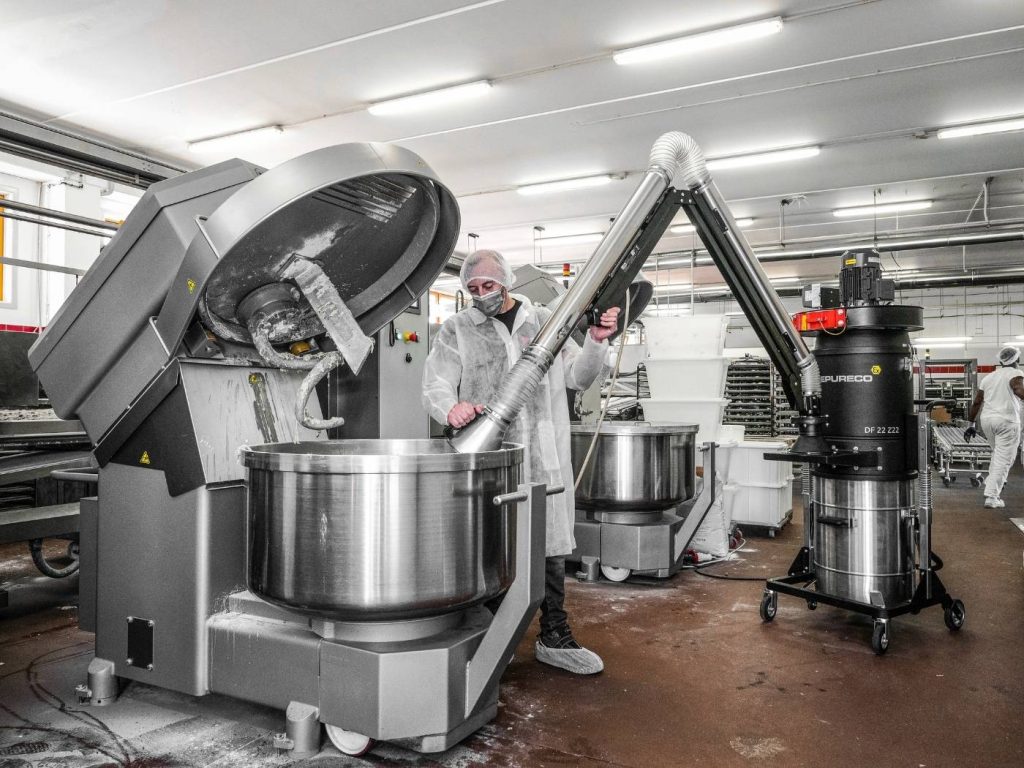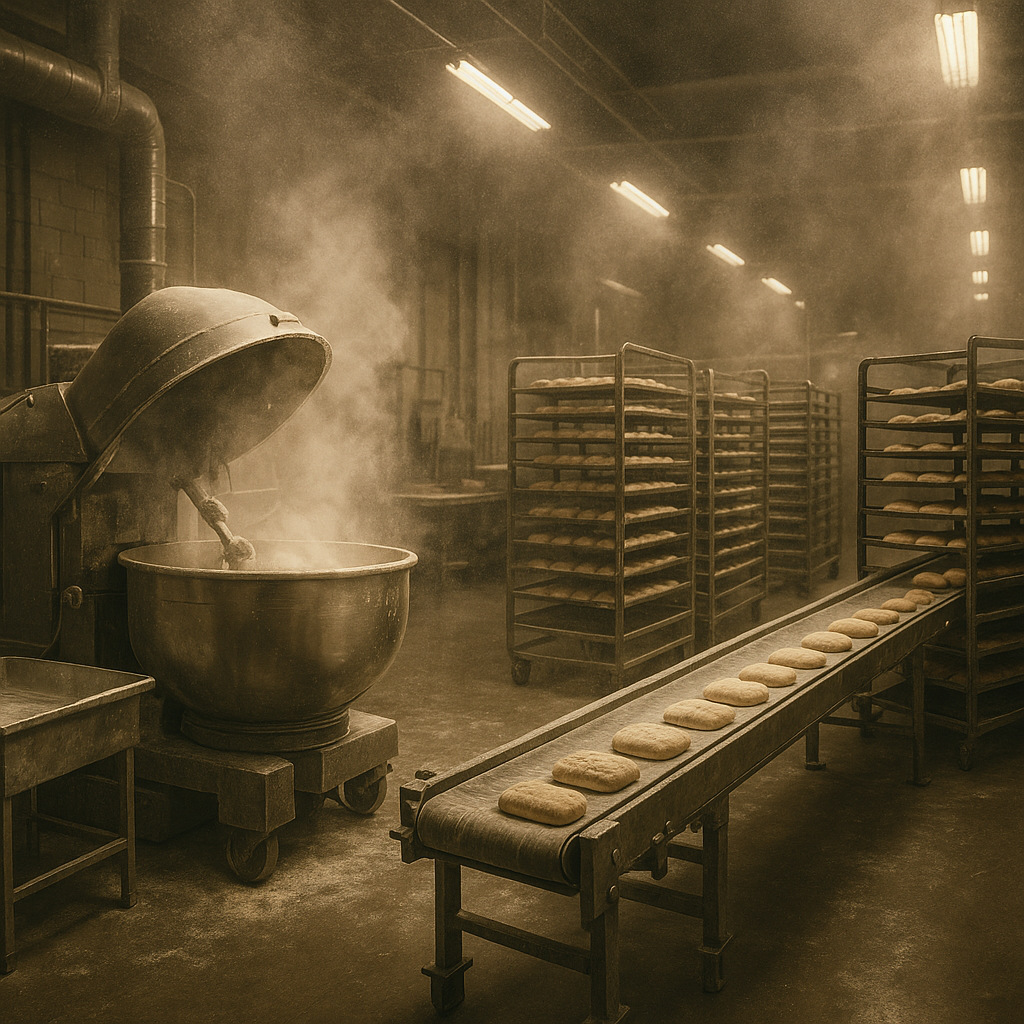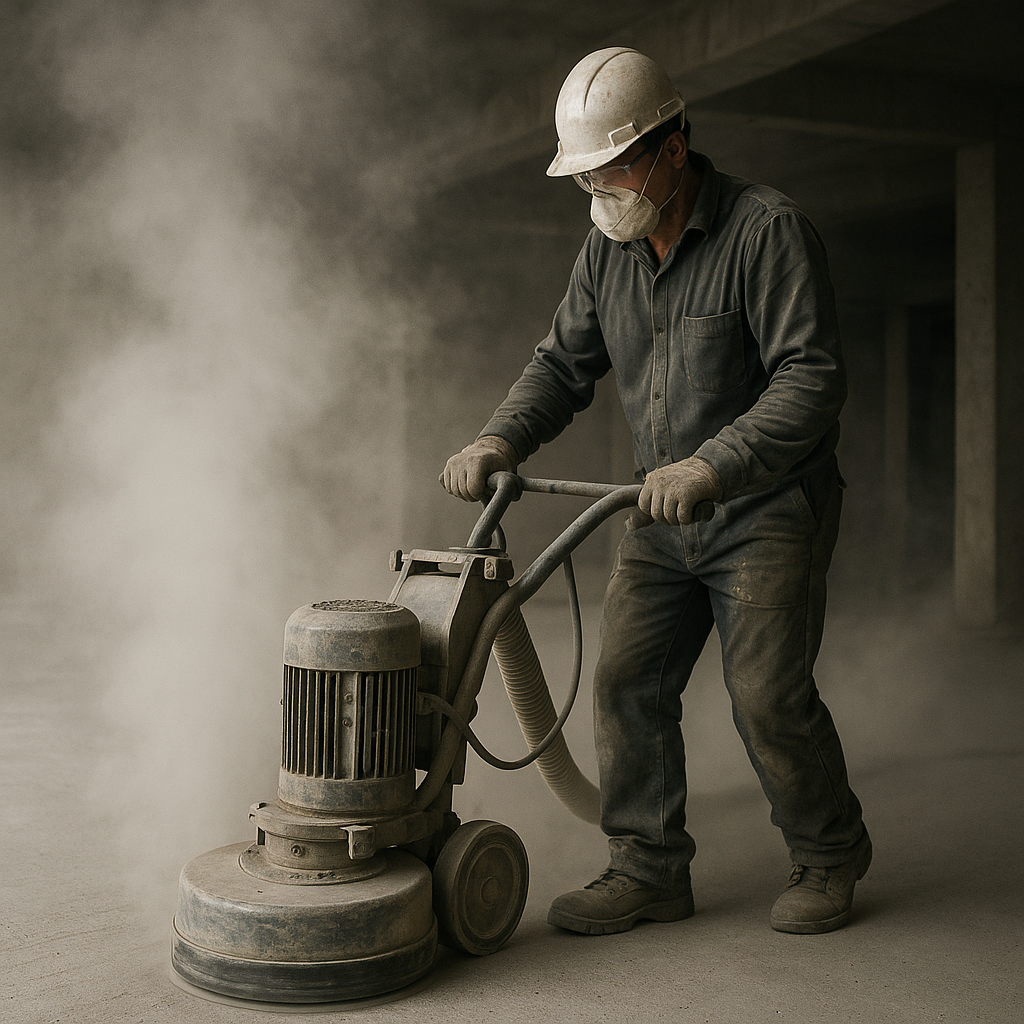Surprise audits
looming?
Need to prove airborne levels < 5 mg/m³ fast?
Stop fine, combustible, or toxic dust before it spreads. Depureco’s source-capture systems pull airborne particles from plant air in minutes, protect operators, and keep product quality high.
Pick the pain-point that brought you here—then jump straight to the fix.
Need to prove airborne levels < 5 mg/m³ fast?
Sugar, flour, aluminium, or titanium dust?
Need a solution for multiple sources at once?
Hazardous respirable silica, lead, pharma dust?
Industry / Process | Typical Airborne Dust | Go-to Depureco Setup |
|---|---|---|
| Food & Grain | Flour, Sugar, Spices | DF 40 cart + Extraction Arm |
| Wood & Furniture | Fine sawdust | PUMA hub + Cyclone |
| CNC & Metal Fab | Aluminium, Titanium Fines | BL PRO ATEX + Wet Separator |
| Concrete / Stone | Respirable Silica | XM35 JC LP HEPA |
| Additive Manufacturing | Nylon 12, Metal AM Powder | DF 40 mobile + Inert-Gas Kit |
| Battery / EV | Graphite, Lithium Dust | HF hub + Isolation Valve |
Walk through any modern facility and the airborne-dust story writes itself: a floor grinder sends respirable silica drifting across a 100,000 ft² warehouse; a CNC lathe ejects micron-size aluminum fines that find their way into servo rails; a bakery bag-dump puffs flour onto a packaging line; an EV cathode mixer releases graphite so light it rides HVAC currents into neighboring work cells. Add weld fume in a fabrication bay, cardboard dust in a fulfillment center, nylon-12 powder in an additive-manufacturing room, and lithium salts in a battery-production glovebox, and you have a multilayer cloud of particles that doesn’t respect work-cell boundaries.
Whether you manage a single grinder station or a 250 000 ft² mixed-process facility, the equation holds: controlled airflow + right filtration media + spark isolation = clean air, uninterrupted production, and compliance you can prove on audit day.

Those particles create three plant-wide challenges:
Mops and once-a-shift vacuums can’t keep pace with real-time generation. The proven fix is a dedicated airborne-dust collection network sized to each process:
A dedicated dust-collector network does more than meet codes—it safeguards people, product, and profit margins. Here’s what manufacturers gain within the first production cycle after installation:
Add on-board ΔP monitoring, variable-pulse cleaning, and remote dashboards and you’ll also cut compressed-air and kWh costs—turning compliance into ROI.
Antistatic extraction arms and on-tool hoods lock onto grinders, mixers, and sanders—dust is captured right at the spark point.
High-CFM cartridge collectors roll or bolt next to any process line, using vertical filters and energy-efficient reverse-pulse cleaning.
H14 HEPA extractors trap 99.995 % of particles down to 0.3 µm; sealed bagging options keep toxic dust out of the air during disposal.
Brushless, fully conductive explosion-safe vacuums meet NFPA isolation rules for St-1/2 powders; add passive valves for ducts ≥ 6 in.
High-power central hubs feed up to 30 pick-ups; remote ΔP logging and PLC pulse control keep uptime high across multiple shifts.
Cyclone knock-outs remove 95 % of bulk dust; immersion wet separators quench sparks from reactive metals like Ti or Mg.


Organic powders like flour and sugar, or metal fines such as aluminium and titanium, can ignite at concentrations as low as 50 g/m³. Explosion-safe vacuums provide full conductivity, brushless drives, and bonding paths under 1 MΩ—eliminating the ignition source while you clean.


When multiple processes generate dust around the clock, a single high-power hub feeding a steel duct loop keeps 4 000 + CFM available at 20–30 pick-ups—no portable units to shuffle, no airflow dead-spots.
Fill out the form below and our engineering team will send you a tailored action plan— not boiler-plate. Whether you need a quick CFM recommendation, help sizing a central vacuum network, or just want to confirm you’re NFPA-compliant, we’ll get back to you within one business day with clear next steps and pricing. No spam, no pressure—just the data you need to breathe easier on the shop floor.
Browse the 30 most-asked questions about airborne-dust risks, sizing airflow, explosion protection, and maintenance. Each answer is concise, regulation-aware, and product-agnostic—so you can make fast, compliant decisions without wading through jargon.
Any particle ≤ 10 µm that stays suspended long enough to travel beyond its point of origin.
Airborne particles reach the lungs, can form explosive clouds, and spread contamination plant-wide.
Use a real-time particulate monitor or collect a gravimetric sample and compare to mg/m³ limits.
5 mg/m³ for general industry per Table Z-1.
A systematic review that identifies combustible-dust risks, required by NFPA 660 every five years.
Within five years of the previous study or sooner if you change processes or materials.
Yes—typical K<sub>st</sub> ≈ 100 bar·m/s, classified St-1.
Yes—any combustible organic powder requires conductive, brushless equipment with bonding and isolation.
Stay below 5 : 1; derate further if relative humidity exceeds 60 %.
Vertical orientation sheds dust evenly, reducing blinding and lowering pulse-cleaning frequency.
Yes—Pneumatic Venturi vacuums have no electric motor, so they’re accepted in Zone 1 provided all contact surfaces are conductive and the air supply is oil-free and grounded.
For reactive metals like aluminum, titanium, or magnesium that may spark or ignite in dry filters.
High CFM clears room air; high static pressure (> 7 000 Pa) powers long hoses or on-tool capture.
Yes—size duct diameters and blower power so each pickup stays above minimum conveying velocity.
2–6 in w.g.; a rising trend without recovery signals filter loading.
For continuous processes, start at 30-second intervals and adjust to keep ΔP stable.
Continuous measurement of pressure drop across filters—used to schedule cleaning and predict cartridge life.
Yes, if duct diameter is ≥ 6 in or if dust K<sub>st</sub> exceeds 200 bar·m/s.
Typically < 5 mJ—static discharge can ignite it.
Yes, if upstream explosion protection prevents flame propagation into the HEPA stage.
A well-tuned pulse manifold consumes ≈ 0.3–0.5 ft³ per pulse; at 30-second intervals that’s 0.6–1 CFM—roughly 30 % less than legacy pulse jets.
Arms capture near the cloud; shrouds capture inside the tool enclosure. Choose based on accessibility and airflow.
Yes—removing 95 % of mass before cartridges lowers pulse frequency and air consumption.
Typically annually, or sooner if ΔP remains above 6 in w.g. after cleaning.
Use sensors that export ΔP, airflow, and runtime to CSV or cloud dashboards.
Cartridges offer larger media area per footprint and capture sub-micron particles more efficiently.
Bonding, grounding (< 1 MΩ), conductive hoses, and antistatic cartridges.
Yes—ensure high vacuum capability and use spark arrestors to protect filters.
Maintain conveying velocity (≥ 4 000 fpm for dust) and limit total pressure drop below blower capacity.
Early alerts on rising ΔP let you clean or change filters before airflow is compromised.